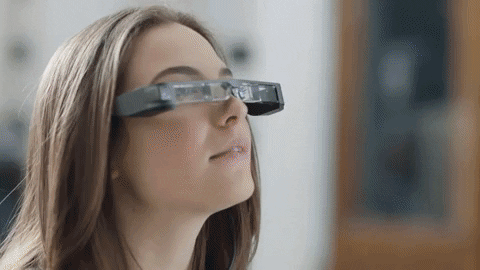In the rapidly evolving landscape of transformative technologies, Augmented Reality (AR) and Virtual Reality (VR) stand at the forefront. Beyond being mere buzzwords, these technologies have rapidly infiltrated various industries, most notably education, reshaping the way we learn. With AR and VR, educators are spearheading a learning revolution, ushering in immersive and interactive environments that redefine student engagement. Let's delve into the captivating realm of AR and VR, exploring their transformative effects on education and the exciting potential they hold for the future.

Embarking on Immersive Journeys Revolutionizing Education :
Revolutionizing Education Imagine stepping into a classroom that isn't confined by four walls—this is the power of AR and VR. By seamlessly blending the digital and physical worlds, AR empowers students to overlay rich content onto their surroundings, amplifying their understanding and involvement.
VR, on the other hand, transports students to captivating virtual realms, allowing them to interact with subjects on a whole new level.
Whether it's virtually touring historical landmarks, dissecting lifelike organisms, or reliving past events, AR and VR open doors to experiential learning that transcends traditional boundaries.
Captivating Engagement and Unforgettable Learning:
AR and VR excel at capturing attention, providing dynamic learning experiences that leave a lasting impression. Their visually stimulating and interactive nature fuels curiosity, paving the way for active participation and profound engagement with the subject matter.

This active approach isn't just captivating—it enhances memory retention, as students tend to remember concepts encountered in interactive and memorable ways.
Embracing diverse learning styles, AR and VR empower students to navigate topics from multiple angles and at their own pace.
Personalization Redefined:
Picture an education tailored to individual needs—AR and VR make this a reality. Educators can customize content and simulations to match each student's learning style and requirements. I
n the realm of language learning, AR can superimpose translations or offer pronunciation guidance, catering to unique needs. VR adapts scenarios according to progress, offering bespoke challenges and feedback.
The result? Personalized learning pathways that amplify comprehension and achievement, elevating education to new heights.
Eliminating Borders, Fostering Connections:
Geographical limitations dissolve with AR and VR, enabling students to collaborate with peers and experts from across the globe.

Virtual classrooms serve as bridges, uniting students from diverse cultures and backgrounds, cultivating global awareness and cultural exchange. Collaboration knows no bounds as students collaborate on projects, share insights, and embrace varied perspectives.
AR and VR also facilitate remote learning, granting access to education irrespective of physical location.
Empowering Inclusivity:
AR and VR redefine accessibility and inclusivity in education. These technologies offer alternative learning avenues for students with varying abilities.
Think visual aids for hearing-impaired students through AR and inclusive environments for those with physical disabilities via VR. Moreover, AR and VR simulate diverse sensory experiences, enabling a comprehensive understanding of the world from multiple vantage points.
Skill-Based Simulations:
AR and VR take learning by doing to a whole new level. Students can engage in skill-based simulations that replicate real-world scenarios.
Whether it's a medical student practicing surgical procedures or an aspiring architect designing virtual structures, AR and VR offer safe and controlled environments for honing practical skills.

This hands-on experience not only boosts confidence but also bridges the gap between theory and application, preparing students for the challenges of their future careers.
Cultivating Empathy and Perspective via AR-VR:
Education is not just about knowledge—it's also about understanding the world and the people in it. AR and VR enable students to step into the shoes of others. History lessons become immersive journeys to significant events.
Cultural studies allow students to virtually visit different countries and experience diverse traditions. This fosters empathy, tolerance, and global awareness, creating well-rounded individuals who appreciate and respect the complexities of the world around them.
As AR and VR evolve, educators must embrace these transformative tools, unlocking new dimensions in education. By integrating AR and VR into the learning fabric, we craft an educational journey that's engaging, inclusive, and transformative—for learners of all generations. The future beckons, ripe with possibilities—seize them with AR and VR for an enriched learning odyssey.
